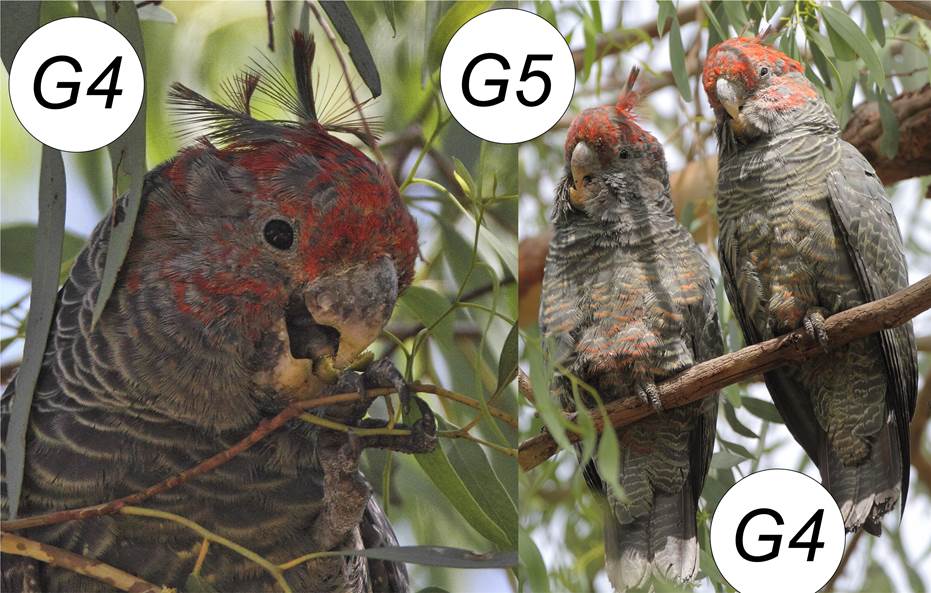Next, there were 2 birds that looked like youngish juveniles. They had greyish crests but a pronounced suffusion of red on the forehead, crown and cheeks. This is a reasonably common phase at this time of year (post-breeding). I have not been certain what sex it represents but Joe Forshaw after checking the ANWC collection says they are males because no juvenile female specimens have that red. They are therefore juvenile males. I have included the snap on the left to show the feeding technique. The bird plucks a twig bearing a cluster of seed capsules. It then splits off the head and uses its bill and tongue to extract the tiny seeds. This would explain why feeding sessions are so prolonged.


